An FPGA is described as a reconfigurable integrated circuit containing an array of logic blocks and programmable interconnects. The document discusses an FPGA's architecture, including configurable logic blocks and routing resources. It also provides VHDL code for an 8-bit ALU implementation on an FPGA, including a process to handle data display on an LCD screen.




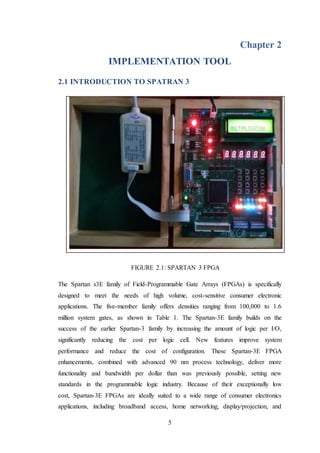


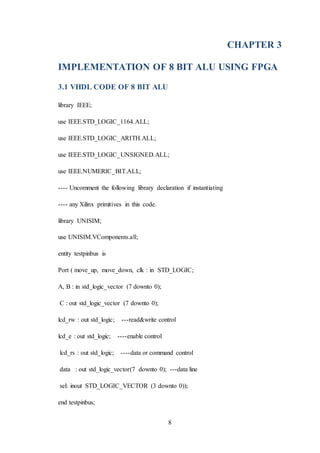

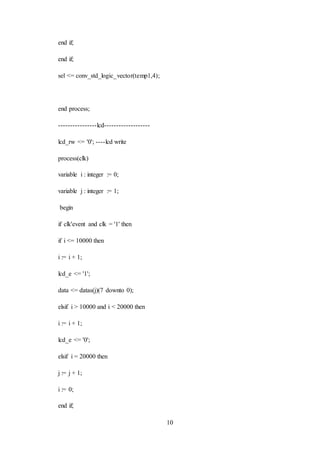


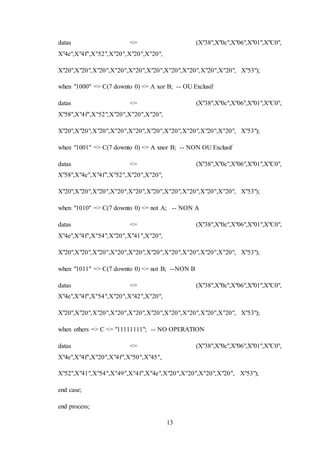


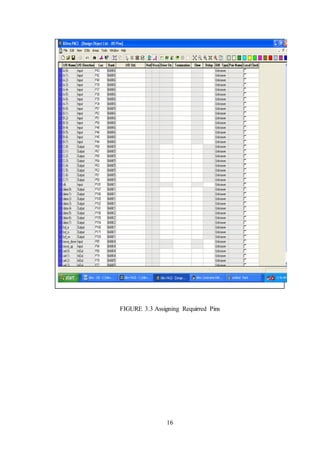

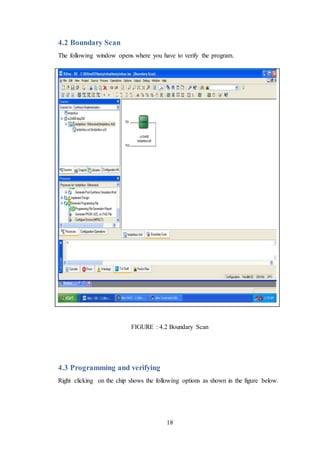




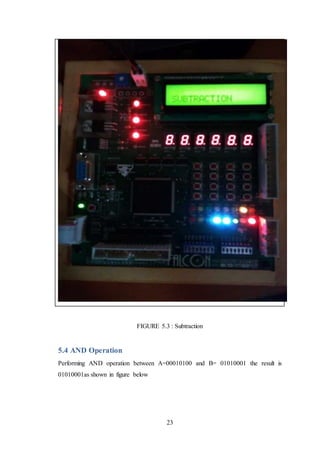



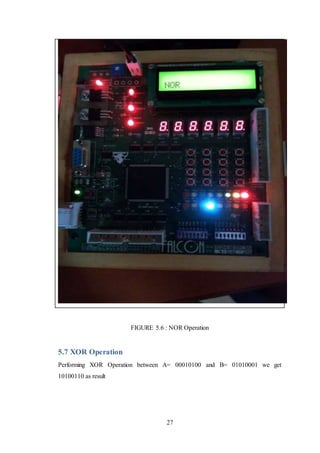
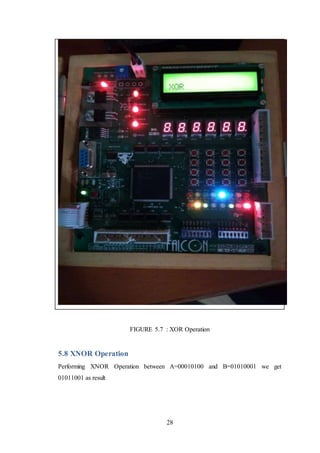



![32
REFRENCES
[1] Toshio Fujisawa, et al, “A Single-Chip 802.11a MAC/PHY With a 32-b RISC
Processor”, in IEEE Journal Of Solid-State Circuits, Vol. 38, No. 11, November 2003.
[2] J. R. Allen, et al, “IBM PowerNP network processor: Hardware, software, and
applications,” in IBM Journal of Research & Development, Vol. 47, No. 2/3
March/May 2003.
[3] Xiaoning Nie, et al, “A New Network Processor Architecture for High-speed
Communications,” in IEEE Workshop on Signal Processing Systems, 1999.
[4] H. Peter Hofstee, “Power Efficient Processor Architecture and The Cell
Processor,” in Proceedings of the 11th International Symposium on High-
Performance Computer Architecture, 2005.
[5] D. L. Perry, “ VHDL”, Tata Mcgraw Hill Edition, 4th Edition, 2002.
[6] C. Maxfiled, “The Design Warriors Guide to FPGAs”, Elsevier, 2004.
[7] J. Bhaskar, “ VHDL Primer”, Pearson Education, 3rd Edition, 2000.
[8] J. Bhaskar, “ VHDL Synthesis Primer”, Pearson Education, 1st Edition, 2002.](https://image.slidesharecdn.com/fpgas11body-170316200753/85/Fpg-as-11-body-32-320.jpg)